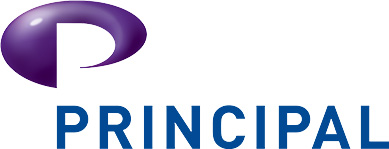


In today’s rapidly evolving digital landscape, businesses are more connected than ever before. However, with increased connectivity comes heightened security risks—especially when it comes to print management. Many organisations overlook the potential vulnerabilities associated with printing devices, which can be an entry point for cyber threats. As cybercriminals grow more sophisticated, implementing robust security measures in print management is crucial to safeguarding sensitive information and maintaining compliance with data protection regulations.
Printers and multifunction devices (MFDs) are often the weakest link in an organisation’s security infrastructure. These devices handle vast amounts of sensitive data, from financial records to legal documents, making them an attractive target for hackers. Without adequate security measures, printers can be exploited through network vulnerabilities, unauthorised access, or even uncollected print jobs left in output trays.
- Unsecured Network Access: Printers connected to an open or poorly protected network can be easily accessed by unauthorised users.
- Data Breaches: Print jobs that contain sensitive information can be intercepted during transmission.
- Unauthorised Printing: Without proper authentication, anyone within the network can send documents to a printer, increasing the risk of information leaks.
- Malware Attacks: Compromised printers can be used as an entry point to launch attacks on an organisation’s broader IT infrastructure.
A Zero-Trust Security Model operates on the principle that no device or user should be trusted by default. It requires continuous verification and authentication, significantly reducing the risk of unauthorised access. Here’s how businesses can apply zero-trust principles to print security:
Restrict printer access to authorised personnel using authentication methods such as PIN codes, smart cards, or biometric scans. This ensures that only approved users can print, scan, or copy sensitive documents.
Encrypting print jobs protects data in transit and at rest. Secure print management solutions ensure that documents remain confidential and inaccessible to unauthorised users.
Secure print release prevents documents from being printed until the user authenticates at the printer. This minimises the risk of sensitive files being left unattended in the output tray.
Isolating printers from the main corporate network can prevent potential breaches. Setting up a dedicated VLAN (Virtual Local Area Network) for printers ensures they remain protected from broader cyber threats.
Outdated firmware and software can create security loopholes. Organisations should regularly update their print devices and management software to patch vulnerabilities and enhance security features.
Advanced print management solutions provide detailed logs of print activity, allowing IT teams to detect anomalies, unauthorised access attempts, or suspicious printing behaviour in real time.
Printers store data on internal hard drives. Before decommissioning or disposing of old print devices, businesses should ensure data is securely wiped to prevent information leaks.
Many industries are subject to stringent data protection regulations, such as GDPR (General Data Protection Regulation), UK Data Protection Act 2018, and ISO 27001. Failure to secure print environments can result in regulatory fines, reputational damage, and legal consequences. Implementing secure print management practices ensures compliance and protects both company and customer data.
As organisations continue to embrace digital transformation, print security must remain a top priority. Adopting cloud-based print management solutions, integrating AI-driven security analytics, and leveraging endpoint protection software are just a few ways businesses can stay ahead of evolving cyber threats.
Don’t let your printers be the weak link in your security infrastructure. At Principal, we offer comprehensive print management solutions designed to enhance security, streamline workflows, and ensure compliance with UK data protection regulations. Our experts can help you implement a tailored security strategy that protects your sensitive data and minimises risks.